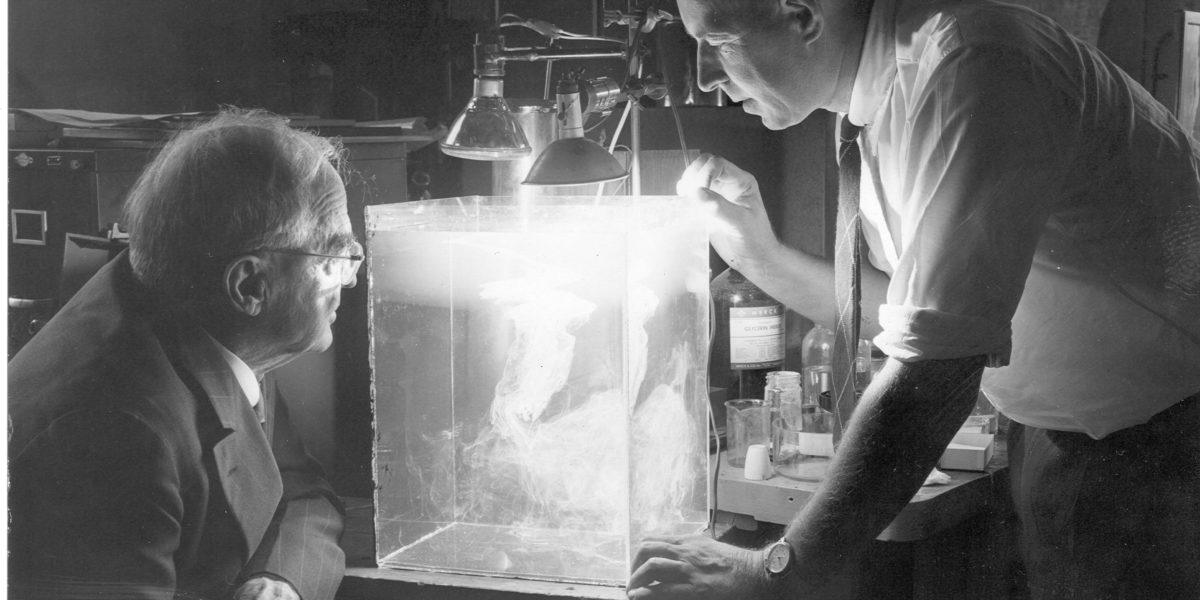‘After global climate control becomes possible, perhaps all our present involvements will seem simple. We should not deceive ourselves: once such possibilities become actual, they will be exploited.’
– John von Neumann, American scientist, 1953.[1]
The Second World War was followed by a period of tension between the two new superpowers, the United States and the Soviet Union. Weather and climate also became entangled in this ‘Cold War’. New techniques to model and even predict the weather, such as the satellite, were emerging.
According to some researchers, human control over the atmosphere was within reach. Soviet scientists proposed melting the ice caps for a more pleasant climate. The US military funded experiments to make artificial rain.
In the 1970s, this confident worldview began to shift. In 1977, an international treaty forbade ‘environmental modification’ for military purposes. The results of weather experiments were disappointing; the expected practical applications failed to materialise. Moreover, scientific evidence was growing that mankind was inadvertently changing the climate through greenhouse gas emissions. Public attention shifted from regional weather patterns to the global climate.
Rainmakers
For thousands of years, people have been trying to influence the weather with prayers or rituals. Parts of Germany and Austria have a tradition of Wetterschiessen or ‘weather-shooting’. Farmers would shoot at thunderclouds with a bow-and-arrow or consecrated rifle to dispel hailstorms. In 1896, vintner Albert Stiger used this practice as the basis for a new theory. According to Stiger, the bang of a large, funnel-shaped cannon could bring threatening hail clouds out of balance. This would reduce the size of hailstones and thus protect crops. The effectiveness of hail cannons remains unproven. Nevertheless, some farmers in Europe and the US still use them to protect their crops.
Cloud seeding
In the 1940s, US scientists Irving Langmuir and Vincent Schaefer regularly made headlines with their research into ‘cloud seeding’. This technique involves sprinkling special salt or ice particles into clouds. The frozen water vapour around these particles should then fall down as precipitation. Before the war, Dutchman August Willem Veraart had done similar experiments. Langmuir and Schaefer conducted successful laboratory experiments in an icebox. However, they failed to conclusively demonstrate cloud seeding’s effectiveness in the open air. The scientific evidence for cloud seeding remains uncertain, although the technique is still used in some countries.
Technology in the Cold War
The early Cold War was marked by an optimistic view of science and technology. This optimism had a peaceful as well as a militaristic side. In the US, ‘artificial rain’ was promoted as a way to help farmers in times of drought. However, during the Vietnam War, the US military also tried to deliberately create mudslides using this technique, under the code name ‘Operation Popeye’. In 1983, US astronomer Carl Sagan argued that nuclear war would lead to huge dust clouds in the atmosphere. Earth would suffer a devastating ‘nuclear winter’. Sagan’s theory was controversial, but sparked protest against the nuclear arms race in both America and the Soviet Union.
[1] “After global climate control becomes possible, perhaps all our present involvements will seem simple. We should not deceive ourselves: once such possibilities become actual, they will be exploited.” John von Neumann, “Can We Survive Technology?”, Fortune, Juni 1955. Geciteerd in: F Bródy and T Vámos (reds.), The Neumann Compendium, vol. 1, World Scientific Series in 20th Century Mathematics (WORLD SCIENTIFIC, 1995), 672-673. URL Can We Survive Technology? (uchicago.edu).






